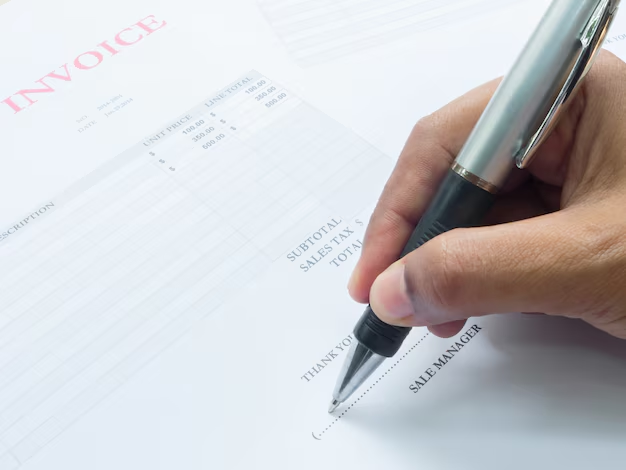How to Ensure Your IRS Check is Processed Without a Hitch
Writing a check to the IRS may not be the most exciting task on your to-do list, but when it comes to financial obligations, it’s crucial to get things right. The IRS processes millions of checks each year, and even minor errors can lead to delays, penalties, or other unwanted complications. So, ensuring that your check meets all the necessary criteria is essential. Let’s dive into the step-by-step process of writing a check to the IRS, and explore some additional insights to help you manage your tax payments effectively.
Understanding the Importance of Accuracy
Financial transactions with the IRS demand precision. A minor error could mean your payment is not applied correctly, potentially resulting in fines or continued accrual of interest on outstanding taxes. Let's begin with the essential steps involved in writing a check to the IRS that guarantees smooth processing.
Step-by-Step Guide to Writing Your IRS Check
Step 1: Determine the Payee
Ready your pen and get ready to fill out your check. Write the check payable to "United States Treasury." This is the officially recognized name, ensuring there are no confusions at receipt.
Step 2: Fill Out the Dollar Amount
Clearly write the exact amount you intend to pay. Write the number in the designated box and again in words beneath, making sure they match. For example, write “$1,245.50” and below it, “One thousand two hundred forty-five and 50/100.”
Step 3: Include Your Tax Identification Details
Provide your Social Security Number (SSN) or Employer Identification Number (EIN) on the memo line. This step is crucial in helping the IRS identify your account and apply the payment correctly.
📌 Pro Tip: Always include relevant tax year references. For instance, "2023 Form 1040," which specifies which obligation the payment corresponds to.
Step 4: Add Contact Information for Clarity
Consider adding your name and daytime phone number in case the IRS needs to reach you. While this is optional, it could be beneficial in swiftly resolving any arising questions.
Step 5: Double-Check and Sign
Before sending, ensure all information is accurate and sign the check. This sign-off validates the transaction, signifying your approval and authority.
Step 6: Where to Send Your Check
Mail your check to the address specified in your tax form instructions or notice. IRS processing locations can vary depending on payment type and your locale. Check the IRS website or your specific tax documentation for details.
✉️ Quick Tip: Always send your payment with tracking or certified mail to secure a delivery record.
Key Tips for Managing IRS Payments
Writing a check is just one piece of the puzzle in managing your tax obligations. Here’s how you can stay on top of your payments:
Keep Thorough Records
Maintain comprehensive records of all tax-related documents, including a copy of each check you send. These are invaluable during audits or discrepancies.
Plan Ahead for Large Payments
If your tax liability is significant, plan your finances to ensure your account can handle the sizeable withdrawal when the IRS cashes your check.
Consider Electronic Payments
The IRS offers electronic payment options that are usually faster and provide instant confirmation. Methods like Direct Pay, electronic fund withdrawal, and credit/debit card payments offer ease and an additional layer of tracking.
Exploring Payment Extensions and Installments
Sometimes, financial strain can make lump-sum tax payments challenging. The IRS provides solutions:
- Installment Agreements: Tailored monthly payment plans.
- Short-term Extensions: Additional time to pay, sometimes accompanied by fees or interest.
💡 Fact: The IRS offers an Online Payment Agreement application on their website. It’s a user-friendly tool to explore payment options fitting your situation.
Troubleshooting Common Issues
Even with meticulous planning, errors happen. Here’s how to address common issues you might encounter:
Issue: Incorrect Amount
If you realize an error after submitting the check, immediately contact the IRS to discuss resolution steps, potentially preventing penalties.
Issue: Lost or Misapplied Check
Keep track of check dispatch details and follow up with both the postal service and IRS if you suspect a misplacement.
Issue: Bank Account Mismanagement
Make sure your account details are up to date, especially if switching banks. Inform the IRS if pending payments could be impacted.
Visually Distinct Summary: Essential IRS Payment Tips
Here’s a quick glance to help your tax payment process run as smoothly as possible:
- ✅ Pay To: United States Treasury
- 📅 Include Details: SSN, Tax Year, Tax Form (e.g., 2023, Form 1040)
- ✍️ Double-Check: Amount in numbers and words
- 📬 Sending Tips: Use certified mail for tracking
- ⚠️ Be Prepared: Keep funds available until IRS confirms the check is processed
Reflecting on Your Tax Payment Journey
Handling tax payments is part of fulfilling our obligations as responsible citizens. Approaching these tasks with diligence and care not only meets legal requirements but ensures peace of mind. Remember, the IRS offers robust support through their website and customer service for any taxpayer needing guidance beyond these fundamentals. While it seems like a simple task, writing a check to the IRS correctly is a small step towards managing your financial duties effectively.
Approach your tax payments equipped with this comprehensive guide, and rest easy knowing you’ve checked off this significant task with the accuracy it demands.

Related Topics
- Are Irs Economic Impact Payments Still Available
- Can i Pay The Irs Online
- Can Irs Form 3911 Be Filed Electronically
- Can You Check Irs Offset Online
- Do Banks Report Deposits To The Irs
- Do Casinos Send W2g To Irs
- Does Cash App Report To Irs
- Does The Irs Do Payment Plans
- How Can i Change My Address With The Irs
- How Can i Contact The Irs